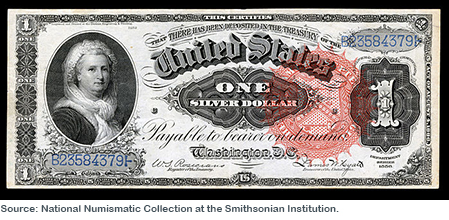Women on Currency-Why Is It Time?
- Written by J.J.
 At the end of the 19th century U.S. currency featured 2 women Pocohantus and Martha Washington. Since then we've seen only 3 more women's portraits and only on special coins. Now the U.S. Treasury is redesigning the $10 bill and, in the overhaul, Alexander Hamilton will move aside for the first image of a woman on currency in 120 years! More than a dozen other countries already feature women on their money. Why has it taken the United States so long and why is now the time?
At the end of the 19th century U.S. currency featured 2 women Pocohantus and Martha Washington. Since then we've seen only 3 more women's portraits and only on special coins. Now the U.S. Treasury is redesigning the $10 bill and, in the overhaul, Alexander Hamilton will move aside for the first image of a woman on currency in 120 years! More than a dozen other countries already feature women on their money. Why has it taken the United States so long and why is now the time?
Small Business Strengthens Communities And Supports Aging Customers
- Written by J.J.
Virtual business and corporate mammoths dominate commerce yet it's the small businesses in our communities that serve the most important role by: anchoring neighborhoods, giving charitably, and widening the social safety net for aging or disabled customers. From realtors sponsoring free e-cycle days to cleaners that organize a coat drive- local businesses see what the community needs and invest in civic well being. From the financial investor prioritizing employment for people with disabilities to the hairdresser scolding a taxi for overcharging her aging customer....small business owners are on the front line of community service supporting their neighborhoods, caring about individual patrons, and helping us age in place.
Read more: Small Business Strengthens Communities And Supports Aging Customers
Honoring the Roots of Positive Aging
- Written by J.J.

In May we honor a long list of celebrations: May Day, Mother's Day, Cinco de Mayo, V-E Day, Armed Forces Day and Memorial Day. It's also Older Americans Month formerly known as "Senior Citizens Month." It's a 60's thing that most people don't think much about today. Afterall, many Boomers don't resonate with the term "senior citizen" or consider themselves "older." When president John F Kennedy established Senior Citizens Month, intending to call attention to the needs of aging Americans, 17 million were over 60 and Medicare, Medicaid, and the Older Americans Act didn't exist. Today individuals over 65 are the fastest growing demographic currently numbering 45 million. "Get Into The Act" is the theme of 2015 Older Americans Month --what act are you into?
Gerotranscendence- The Final Stage in Human Development?
- Written by J.J.
Never have so many Americans aged at once---1 in 3 are now over 50 years of age. Though headlines discuss whether or not Boomers are ready for retirement and how we're shaping consumer products and services little is written about the developmental value of aging. Articles challenge us to live younger longer but say nothing about the changes or insights we may encounter on our way to advanced ages. Is aging a state of decline or the last rich phase of human development? New interviews and research reveal some interesting clues.
Read more: Gerotranscendence- The Final Stage in Human Development?
